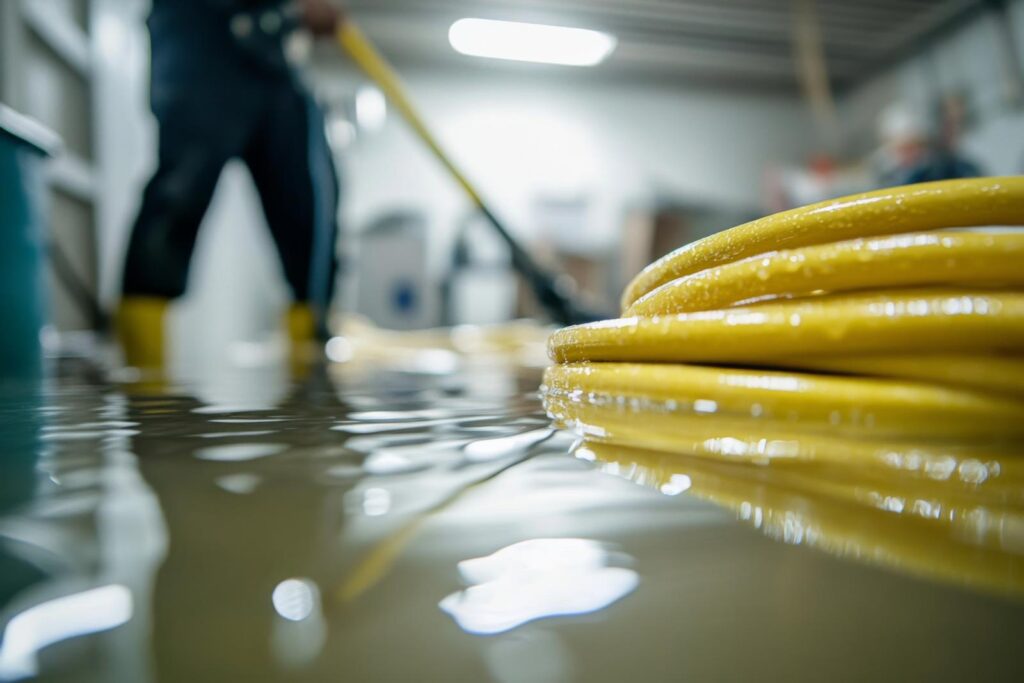
Contents
Many people overlook the impact of water type on extraction tool selection, yet it’s vital for effective remediation. Clean, gray, and black water each requires different strategies and equipment. Before making a purchase, it’s important to evaluate your specific water extraction needs, including the area size and the performance of potential tools. Understanding these factors can greatly influence your success in managing water damage. So, what should you focus on first?
Key Takeaways
- Assess the type of water intrusion (clean, gray, or black) to determine the necessary extraction tools and sanitation methods.
- Evaluate the size of the affected area to select appropriate equipment; larger areas may require industrial-grade pumps while smaller leaks need portable extractors.
- Consider the materials involved, as specialized tools may be necessary for delicate surfaces like hardwood floors or drywall to prevent further damage.
- Look for tools with strong suction power and adjustable settings to enhance efficiency and versatility during water extraction tasks.
- Ensure tools are lightweight and portable for easy transport and setup, and prioritize ergonomic designs to minimize fatigue during prolonged use.
Assessing Your Specific Water Extraction Needs
How do you determine the right water extraction tools for your situation? Start by evaluating the type of water intrusion you’re dealing with—be it clean, gray, or black water. Each category requires specific tools for effective removal and sanitation.
Next, consider the size of the affected area; larger spaces may necessitate industrial-grade pumps or vacuums, while smaller leaks might only need portable extractors.
Consider the materials involved; hardwood floors or drywall may need specialized tools to prevent further damage. Additionally, think about the duration of exposure to water, as this impacts the choice of tools needed for thorough extraction and drying.
Lastly, don’t overlook the significance of your safety gear. Ensuring you have proper protection while using these tools is essential for both your health and the integrity of your extraction process.
Evaluating Tool Performance and Efficiency
When evaluating the performance and efficiency of water extraction tools, what criteria should you prioritize?
Start by examining the extraction rate, which indicates how quickly the tool can remove water. A higher extraction rate usually means more efficiency, especially in larger areas.
Next, consider the suction power; tools with strong suction can handle various surfaces and water types more effectively.
Durability is also essential. Look for materials and designs that withstand regular use without frequent breakdowns.
Additionally, check energy consumption; efficient tools should minimize operational costs while delivering high performance.
Lastly, assess the tool’s features, like adjustable settings and filtration systems, which can enhance its versatility and longevity.
Considering Portability and Ease of Use
While selecting water extraction tools, portability and ease of use greatly influence your efficiency and effectiveness during operations. When you’re dealing with water damage, you need tools that are easy to transport and set up.
Look for lightweight models that can be carried without strain, especially if you’re working in tight or awkward spaces. Consider tools with ergonomic designs; they’ll minimize fatigue, allowing you to work longer without discomfort.
Additionally, check if the tools have intuitive controls. You don’t want to waste time fumbling with complicated settings when urgency is key. Models with quick-connect features can streamline your workflow, ensuring you can switch attachments rapidly.
Finally, assess the storage options; compact designs help you maintain organization and facilitate easy transport to and from job sites.
Ultimately, selecting portable and user-friendly tools not only enhances your workflow but fosters a sense of belonging in a community that values efficiency and professionalism.
To Sum Up
When it comes to selecting the right water extraction tools, the stakes are high. You need to evaluate the type of water intrusion, the area size, and the performance of each tool. But what if you overlook even one detail? The consequences could be dire. By carefully analyzing your needs and prioritizing efficiency and portability, you can guarantee your extraction process is not just effective but also swift. The right choice could mean the difference between minor damage and a major disaster.
Recent Posts
Choosing Genuine Water Extraction Tools for Restoration
When tackling water damage restoration, choosing genuine water extraction tools is essential for effective results.
Selecting the Right Tools for Water Extraction
Did you know that improper water extraction can lead to up to 40% more damage
Why Choose the Right Water Extraction Tools?
Choosing the right water extraction tools is crucial for effective moisture management. Using appropriate equipment
